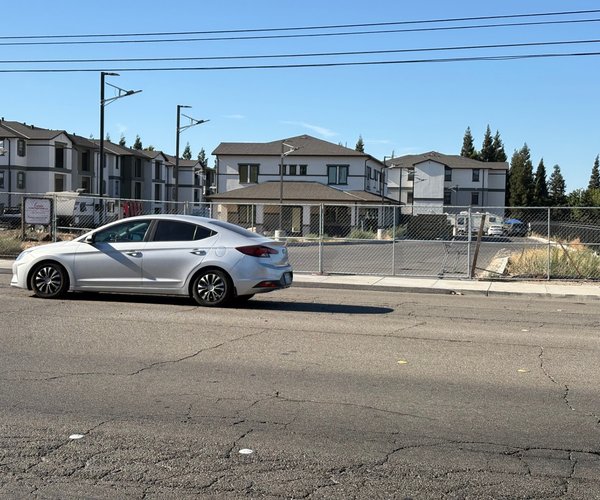Manteca Unified is building a fourth high school in the City of Manteca.
And it is doing so without spending $140 million plus.
That fourth campus is “right sizing” the existing Manteca, East Union, and Sierra High campuses. The plan is to bump the design capacity of each campus to 2,250 students. That represents an increase of about 700 students over current enrollments at each campus. Ultimately when each campus reaches capacity it will be the equivalent of adding a fourth high school based on today’s enrollments. It means the need to build an expensive standalone high school campus on Tinnin Road in South Manteca could be put off 20 years or longer.
The plan was devised out of a commitment by the board and district staff to maximize available resources to stretch the effectiveness of limited tax dollars as well as aim for a high school setting that could offer students the optimum breadth of educational opportunities with a reasonable size.
The idea of 3,000 student high school campuses was examined but it was decided such a size was unwieldy plus had diminishing returns in terms of educational opportunities.
The work now underway at Manteca High will ultimately position it to handle 2,250 students while addressing modernization and safety concerns at the 99-year-old campus.
It is the result of the district staff constantly re-evaluating space and programs in a drive to maximum expenditures and effectiveness.
There is one other benefit that wasn’t penciled into the equation that is just as important. New neighborhoods will continue to be absorbed by existing schools. While that may not seem like a big deal it is. There won’t be a “new school” serving just the “new areas”. It will allow “old” and “new” Manteca to mix given high schools are a major component of a community’s social and cultural fabric.
It will help avoid a social balkanization of Manteca that would be a real possibility had the district chose a course that would have put the fourth high school south of the 120 Bypass. The freeway barrier coupled with a de facto “community center” that a high school campus can be when use by the community as well as youth groups are factored in as well could easily have created an “us” versus “them” thing in Manteca.
With the potential of growth north of Lathrop Road the die is being further cast for the three existing campuses to all serve both “new” and “old” Manteca as the years unfold.
It will mean attendance boundary shifts that likely will see parts of the northern attendance areas of Sierra and Manteca being switched to East Union.
That possibility is a ways off.
The main thing is Manteca will be able to accommodate high school growth without having to incur major outlays for expensive support facilities such as gyms or developing new campus infrastructure from scratch.
The strategy, similar to one undertaken at the elementary level as well to handle anticipated growth, should also make it somewhat easier to convince voters to support future bonds needed to tackle what is projected to be upwards of $1 billion in upgrades from ongoing wear and tear as well as aging for existing facilities. Schools are not much different from homes. Roofs need to be replaced. Plumbing and electrical wiring do age. Major systems wear out such as air conditioning. Concrete and asphalt deteriorate.
It also means school fees collected to accommodate growth when building permits are issued as well as Mello-Roos tax receipts will come closer to covering the actual tab for new growth. Building permanent classroom wings at existing schools is a lot less expensive than building a campus from scratch.
It also opens the door for other possibilities.
When Manteca Unified obtained the Tininin Road site the 200-year floodplain was not an issue. Now it is clear if the district built a high school there it would essentially be on the ultimate southwest point of potential urbanization.
That leaves the district with a number of options.
It could eventually become the fourth high school site within Manteca. It could also be used to trade for a more suitable location based on growth patterns 20 years down the road. And if the face of secondary public education in the next two decades changes significantly it could be partially used to build a charter high school dedicated as a STEM or vocational format.
If the site isn’t developed as a full scale comprehensive high school it could serve as a location for a future replacement campus for Calla High — a continuation high school campus at the corner of busy East Highway 120 and Austin Road.
The 2,250 student high school model would serve Lathrop High well. Given the bulk of the city’s growth is across the San Joaquin River where River Islands is building its own high school targeted for a 2022 opening, Lathrop High should be able to accommodate future growth north of the river. If not Weston Ranch — the only MUSD high school campus not currently surrounded by approved subdivisions yet to be built can accommodate students from Lathrop as well.
The constant rethinking of options with an eye on available funds reflects Manteca Unified was serious about the promise it made to get the best possible outcome with the available funding for school facilities.
The district has been careful to commit to options that don’t inadvertently lead to “partial schools” that have programming deficiencies in order to provide students regardless of where they go to school within the district.
Such was the rationale to make sure every elementary campus has functional multipurpose rooms. It also was the driving force behind the final formatting of the Manteca High campus that is using the available $42 million to build a replacement swimming pool for the one that was torn our last week instead of rolling the dice and hoping voters would approve a bond measure as early as 2022 that could have included funding for the pool.
The district should be lauded for taking a course of action that reflects the reality of funding, the expectation taxpayers have that their hard earned money is well spent, and creates the best possible education outcome in terms of available space and facilities while at the same time working to keep the social fabric of Manteca from being torn apart by growth.
This column is the opinion of executive editor, Dennis Wyatt, and does not necessarily represent the opinion of The Bulletin or Morris Newspaper Corp. of CA. He can be contacted at dwyatt@mantecabulletin.com or 209.249.3519.






